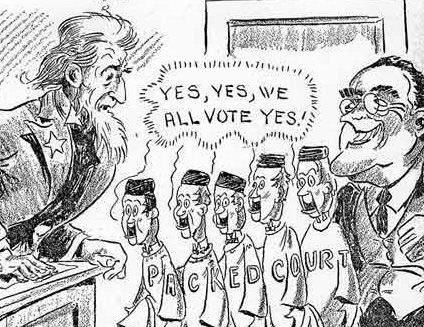By Kaleena Fraga
Happy Halloween from History First!
Since John and Abigail Adams moved into the White House in 1800, the executive mansion has had its fair share of inhabitants–from this world and the next. Jared Broach, who offers tours of haunted places in America, calls paranormal sightings in the White House “verified.” To say otherwise, he noted, would be “calling eight different presidents liars.”
One of the first people to live in the White House–Abigail Adams–is reported to continue to roam the halls. Witnesses have claimed to see her en route to the East Room–where she once would hang laundry–and some White House staff have smelled wet laundry and the scent of lavender. Why Abigail Adams would prefer to spend her time in the afterlife doing laundry at the White House, instead of relaxing at home in Massachusetts, is beyond the comprehension of History First.
Harry Truman wrote a letter to his wife in 1945 expressing the haunted feeling of his new home–he was only two months into his term at the time.
“I sit here in this old house and work on foreign affairs, read reports, and work on speeches–all the while listening to the ghosts walk up and down the hallway and even right in here in the study. The floors pop and the drapes move back and forth–I can just imagine old Andy [Jackson] and Teddy [Roosevelt] having an argument over Franklin [Roosevelt].”
Truman wasn’t the only one to imagine Jackson’s lingering presence in the White House. Mary Lincoln, who wanted desperately to believe in the afterlife after the death of her sons, and then her husband, also felt Jackson. She told friends that she had heard Jackson “stomping and swearing.” Jackson has also been spotted lying in his bed in today’s Rose Room, and others have heard his “guttural laugh” in the White House since the 1860s. In addition to Jackson, Mary Lincoln also once reported seeing the ghost of her dead son, Willie, at the foot of her bed, and even thought she heard Thomas Jefferson playing the violin.
In 1946, Truman wrote another letter to his wife detailing a more concrete supernatural experience. He writes that he went to bed, and six hours later heard a strong knock on his bedroom door.
“I jumped up and put on my bathrobe, opened the door, and no one there. Went out and looked up and down the hall, looked in your room and Margie’s [the president’s daughter]. Still no one. Went back to bed after locking the doors and there were footsteps in your room whose door I’d left open. Jumped and looked and no one there! The damned place is haunted sure as shootin’. Secret Service said not even a watchman was up here at that hour.”
“You and Margie had better come back and protect me before some of these ghosts carry me off.”
Perhaps the White House’s most famous ghost is Abraham Lincoln–killed only a month and a half into his second term in office. Grace Coolidge first reported seeing Lincoln’s ghost in the 1920s, staring across the Potomac at old Civil War battlefields. Other first ladies also sensed Lincoln’s presence. Eleanor Roosevelt, who worked out of a room near the Lincoln Bedroom, said she strongly felt Lincoln’s presence one night. Two European visitors, staying down the hall, said that they had felt the same thing. Lady Bird Johnson, after watching a documentary about Lincoln, admitted to similar feelings in the private residence, where Lincoln had once worked out of his office.
Other visitors to the White House have had more tangible crossings with the assassinated president. Queen Wilhelmina of the Netherlands visited the White House in 1942, and slept in the Lincoln Bedroom. She claimed to have heard a knock on the bedroom door, and to have discovered Abe Lincoln on the other side–an experience so frightening that she fainted outright.
Winston Churchill liked to tell a story about his own ghostly Lincoln encounter during a visit to the White House in 1940. As Churchill tells it, he had just stepped out of the bath and picked up a cigar. Walking into the next room wearing nothing and still dripping wet, he found Lincoln by the fireplace.
“Good evening, Mr. President,” Churchill reportedly said. “You seem to have me at a disadvantage.”
Even Ronald Reagan’s dog, Rex, seemed to sense something unsettling about the Lincoln Bedroom. It was the only room in the White House that the dog refused to enter. Reagan himself said that Rex had twice barked “frantically” in the Lincoln Bedroom, then backed out and refused to come back in. The president went on to say that one night while the Reagans were watching TV in the room below the Lincoln Bedroom, Rex began to bark at the ceiling. The president thought the dog might be detecting some sort of spy equipment, perhaps an electrical signal too high pitched for Reagan to hear himself.
And yet Rex the dog wasn’t the only one to feel uneasy about the Lincoln Bedroom during the Reagan administration. The president related a story in which his daughter Maureen and her husband both saw a ghosty figure in the bedroom, looking out the window.
It seems that the ghosts of the White House have been fairly quiet in recent years–or perhaps the current and recent inhabitants are hesitant to tell their stories.


